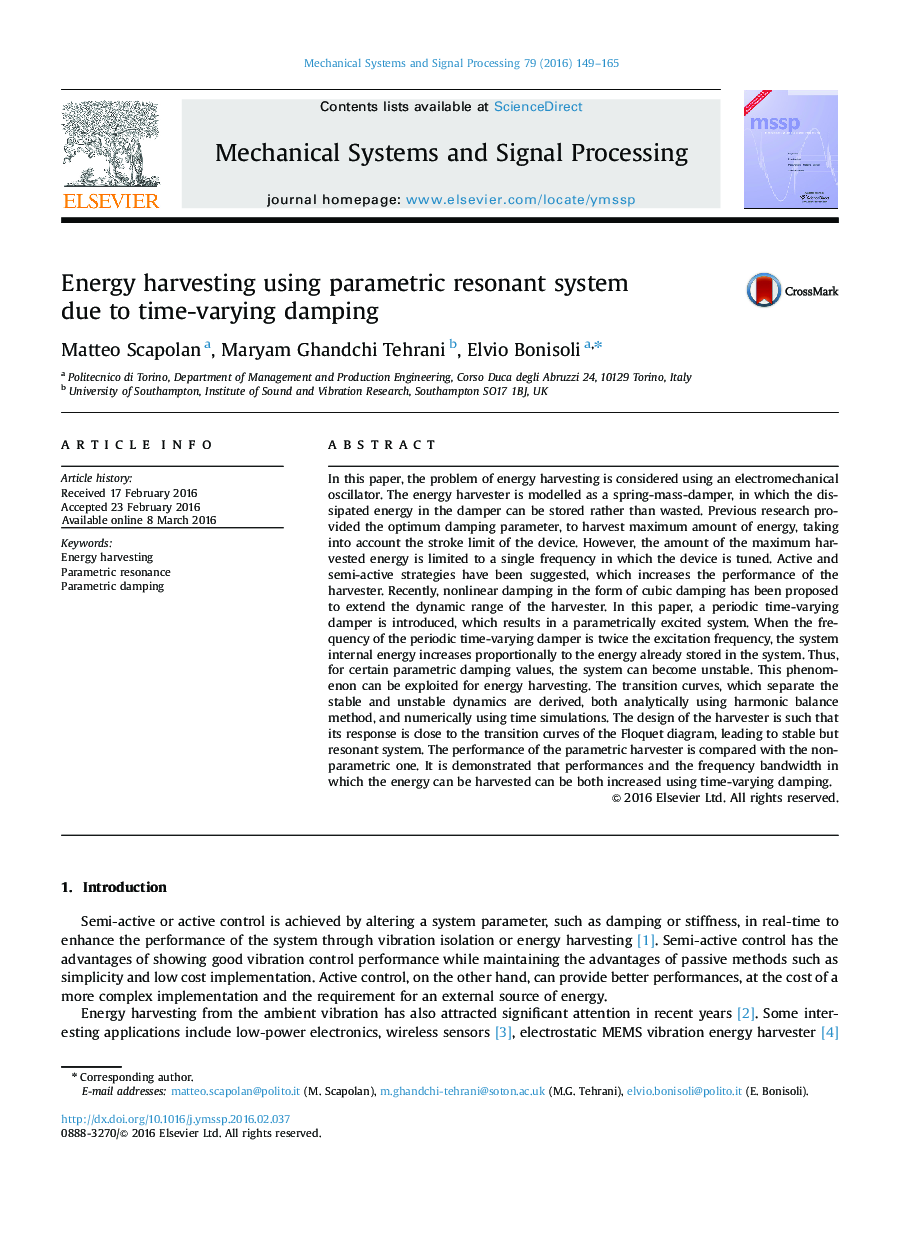| Article ID | Journal | Published Year | Pages | File Type |
|---|---|---|---|---|
| 559048 | Mechanical Systems and Signal Processing | 2016 | 17 Pages |
•The problem of energy harvesting via electromechanical oscillator is presented.•A non-linear damping approach is proposed, obtained through a time-varying damper.•Properties of parametrically excited systems are exploited to enhance performances.•Analytical and numerical methods are used to simulate the system behaviour.•Active and semi-active control strategies are proposed for performance enhancement.
In this paper, the problem of energy harvesting is considered using an electromechanical oscillator. The energy harvester is modelled as a spring-mass-damper, in which the dissipated energy in the damper can be stored rather than wasted. Previous research provided the optimum damping parameter, to harvest maximum amount of energy, taking into account the stroke limit of the device. However, the amount of the maximum harvested energy is limited to a single frequency in which the device is tuned. Active and semi-active strategies have been suggested, which increases the performance of the harvester. Recently, nonlinear damping in the form of cubic damping has been proposed to extend the dynamic range of the harvester. In this paper, a periodic time-varying damper is introduced, which results in a parametrically excited system. When the frequency of the periodic time-varying damper is twice the excitation frequency, the system internal energy increases proportionally to the energy already stored in the system. Thus, for certain parametric damping values, the system can become unstable. This phenomenon can be exploited for energy harvesting. The transition curves, which separate the stable and unstable dynamics are derived, both analytically using harmonic balance method, and numerically using time simulations. The design of the harvester is such that its response is close to the transition curves of the Floquet diagram, leading to stable but resonant system. The performance of the parametric harvester is compared with the non-parametric one. It is demonstrated that performances and the frequency bandwidth in which the energy can be harvested can be both increased using time-varying damping.
